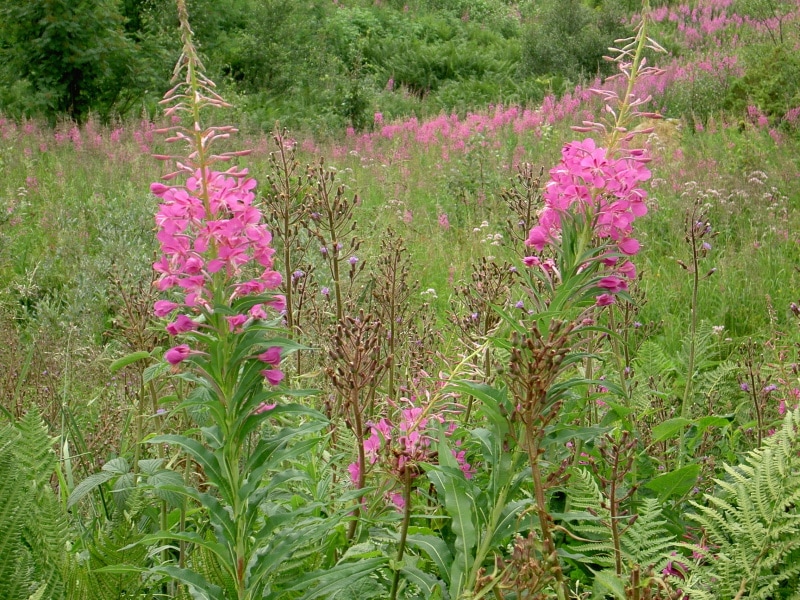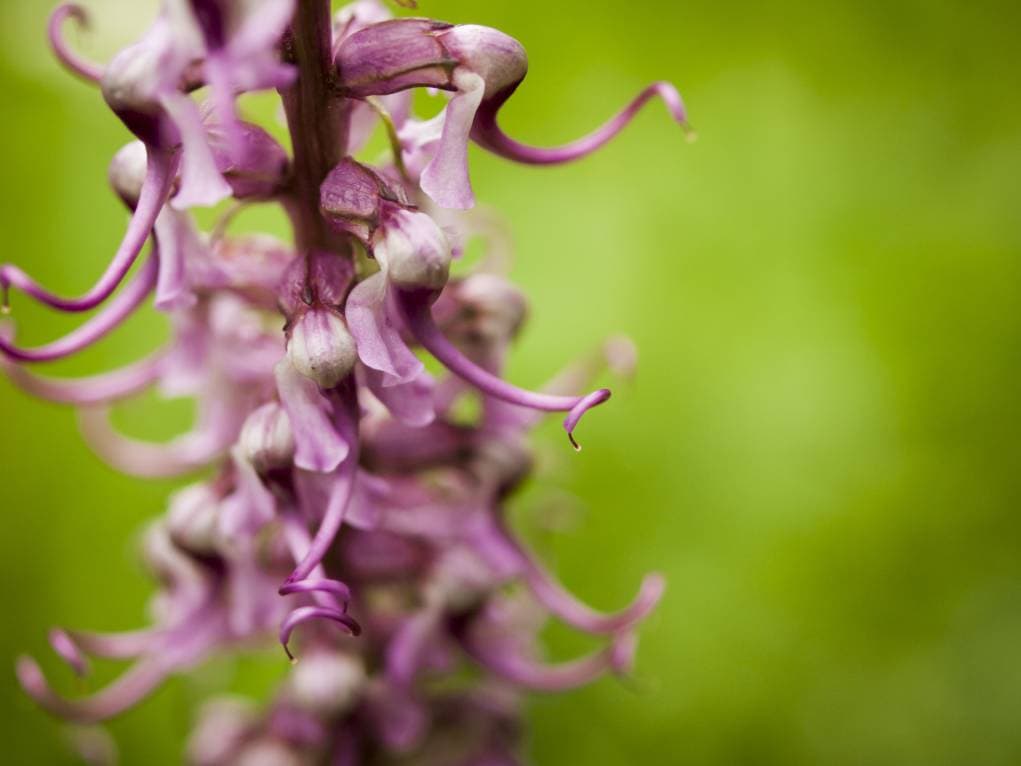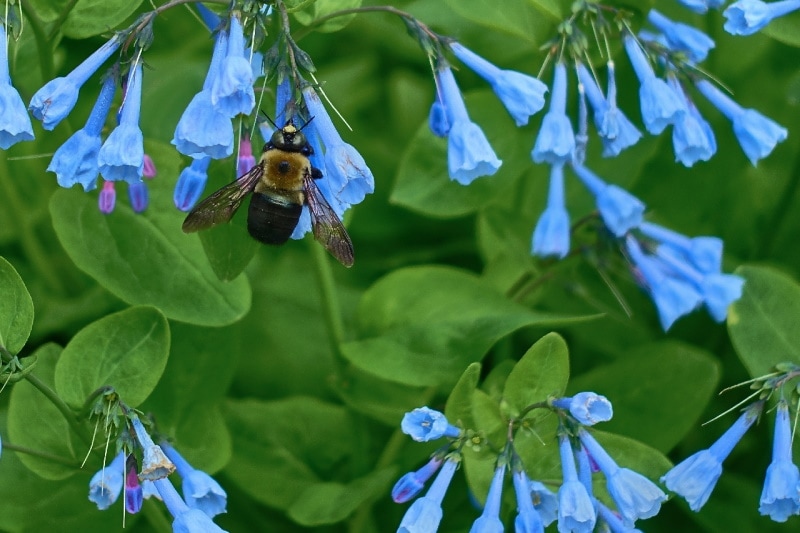10 Wildflowers That Grow in Utah (Identification Guide with Pictures)
-
Jeff Weishaupt
- Last updated:

One of many things that people visiting Utah notice is the wildflowers. The state is home to vast forests consisting of fragrant Lupines, Indian Paintbrush, Sego Lilies, and numerous wildflowers. You will likely witness most of these wildflowers in Utah when traveling to the North.
The optimal time to see Utah wildflowers depends on the elevation and temperature. Take a hike to the state’s high-elevation areas between March and September, especially during June, July, and August. No matter where and how you find Utah’s wildflowers, you will remember their beauty for a long time. If you are determined to go on Utah’s wildflower trails, your hard work won’t be in vain.
So, the next time you plan to hike in Utah, look for the below 10 wildflowers on the state’s hiking trails:
The 10 Wildflowers That Grow in Utah
1. Heartleaf Arnica

| Scientific Name | Arnica cordifolia |
| Height | Up to 12 inches |
| Elevation | 5,000 to 11,000 feet |
| Other Name | Leopard’s Bane |
Visiting the Wasatch Mountain range in Utah during early summer will help you witness beautiful yellow-colored Heartleaf Arnica. Like their name, these flowers have heart-shaped leaves with sharply toothed edges.
They are popular for their medicinal properties among natives. In fact, many people take them orally or apply them topically on their infections and bruising. You may confuse Heartleaf Arnica with sunflowers and balsam roots.
The leaves and stems of these plants are a bit hairy, and the flowers are around 2 inches in diameter. They are usually found in the understory of fir, spruces, and aspen. You may also find Heartleaf Arnicas in the Salt Lake Valley’s foothills. So, to witness these beautiful wildflowers in Utah, visit the state’s open woods around May and July.
2. Fireweed

| Scientific Name | Chamerion angustifolium |
| Height | 2 to 4 feet tall |
| Elevation | 5,000 to 11,900 feet |
| Other Names | Great Willow Herb, Blooming Sally, and Willoweed |
Fireweed has long and delicate stems with gorgeous, vibrant pink flowers that usually bloom in summer. The flowers are nearly 1 inch in diameter. As soon as the summer arrives, the flowers start blooming from the lower part of the plant to the upper part. Fireweed can grow up to significant heights, typically around 7 feet.
If you visit Utah in August or September, you will see that the petals of these plants have dropped, leaving behind long cylindrical pods. The pods then release seeds that remain attached to multiple silky strands.
One interesting fact about fireweed is that a single plant can produce more than 80,000 seeds. Natives once used the silky stands of this plant for weaving or padding.
Fireweed plants love sunny, woody, roadside, forest, and open meadow areas as their habitat. It is also considered forage for humans and animals, such as elk, deer, and grizzly bears. You can also boil the young leaves and stems of fireweed and consume them.
3. White Bog Orchid

| Scientific Name | Platanthera dilatata |
| Height | Up to 1 foot |
| Elevation | 6,400 to 10,500 feet |
| Other Names | Bog Candle, Scent Bottle, and Fringed Orchid |
White Bog Orchids are rare wildflowers in Utah. These are beautiful, delicate flowers blooming in high mountain meadows in a group of 20 or more. To witness them, you must visit wet areas like streams or springs.
The stems of these flowers can be 12 inches or longer. However, the flowers are small and densely packed near the central stem. White Bog Orchards’ gorgeous white color seems even more beautiful when combined with bright green leaves.
The best time to visit Utah to witness these flowers is June, July, and August. Simply visit the state’s popular streams or springs, and the strong orange, cloves, and vanilla scent of these flowers will attract you to them.
4. Sego Lily

| Scientific Name | Calochortus nuttallii |
| Height | 1.5 feet |
| Elevation | 3,300 to 10,000 feet |
| Other Names | Mariposa Lily, Star Tulip, and Butterfly Tulip |
The Sago lily is the official state flower of Utah. The name Sago belongs to “Shoshone” origin. Many pioneers used the plant’s starchy bulb in the late 1800s as a forage.
These white flowers consist of three petals with yellow patches and a maroon base in each bloom. If you have already seen a Spring Tulip, the flower resembles it in height and shape. However, you can distinguish it from other tulips by looking at their leaves. Sago lilies have thin blade-like leaves.
A Sago Lily plant is capable of growing up to 1.5 feet. Make sure to visit the foothills, dry open plains, and rocky slopes of Utah during June and July to witness Sago Lilies blooming at their best.
5. Indian Paintbrush

| Scientific Name | Castilleja linariaefolia |
| Height | 2 feet |
| Elevation | 3,700 to 10,300 feet |
| Other Names | Wyoming Paintbrush, Paintbrush, Painted Cup, and Wyoming Painted Cup |
Indian Paintbrush is one of the most popular and widely recognized wildflowers in Utah. It is also the state flower of Wyoming. These flowers are found in various colors, from electric red and shocking pink to orange. You might not find an individual flower to be very colorful. Instead, the colorful bracts or modified leaves make them attractive to the eyes.
The bracts of the Indian Paintbrush are either yellow or green. You will likely find these wildflowers in the foothills and high mountains up to 10,000 feet of height. However, they are also present in the lowest valleys with dry to moist soil.
These plants are partial-parasitic, meaning they only produce a tiny part of their required nutrients. Their roots keep growing in the soil until they interact with a plant. They penetrate their neighbor’s roots to steal their nutrients.
The Indian Paintbrush blooms from June to early August. So, visit Utah during this time to witness these breathtaking wildflowers.
6. Elephanthead Flowers

| Scientific Name | Pedicularis groenlandica |
| Height | 2 feet |
| Elevation | 7,400 to 11,900 feet |
| Other Names | Little Red Elephant, Elephant Flower, Fernleaf, and Elephant’s Head |
True to their name, the Elephanthead wildflowers are delicate, magenta-pink flowers with an elephant’s trunk and face. Their stems can be either clustered or present individually at varying heights. You can identify the Elephanthead wildflower from its fern-like leaves, which also feature teeth.
The best time to witness these wildflowers in Utah is around late June to early August. Visit any wet or boggy area near meadows, streams, or beaver ponds, and you will find a field of Elephanthead wildflowers blooming. You may also find these flowers in springs in Alpine Tundra communities, spruce, and fir.
However, you may have to reach a higher elevation to see these flowers since they usually thrive in such areas. The Elephanthead wildflowers are one of the must-seen flowers in Utah.
7. White Colorado Columbine

| Scientific Name | Aquilegia spp. |
| Height | 1 to 3 feet |
| Elevation | 5,500 to 12,000 feet |
| Other Name | Rocky Mountain Columbine |
White Colorado Columbines are one of the most colorful wildflowers in Utah. You may find them in white, yellow, blue, or coral red, as their colors vary depending on the soil’s acidity. The soil has a basic PH if you find yellow or pale blue flowers. In contrast, darker colors represent acidic soils.
To witness the glory of White Colorado Columbines, you must visit Utah around July and early August. These flowers bloom in cool and damp areas, mainly near mountain shrub communities and the understory of aspen. They also thrive in open woods, valleys, and meadows.
Look for the fern-like foliage to identify the White Colorado Columbines. They have five ring-shaped sepals accompanied by five tube-shaped petals. Many birds and insects, including hummingbirds and butterflies, love to fly near these flowers.
8. Silvery Lupine

| Scientific Name | Lupinus argenteus |
| Height | 1 to 3 feet |
| Elevation | 3,500 to 11,300 feet |
| Other Name | – |
The Silvery Lupine grows in different ways. Sometimes, you may find them carpeting the meadow and forest floors. Other times, they may grow at lower and middle-level elevations. You can even find taller Silvery Lupine, a popular garden flower in Utah.
The leaves of Silvery Lupine are shaped as narrow leaflets with many blades. The flowers range from blue to purple and occupy the top part of the stem. One interesting fact about the Silvery Lupine is that it is considered poisonous. However, its roots consist of nitrogen-fixing bacteria that nourish and enrich the plants.
So, the next time you go to Utah, visit mountain shrub and aspen communities to witness the glory of Silvery Lupine. These purple or blue-colored wildflowers will surely make your day.
9. Western Yarrow

| Scientific Name | Achillea millefolium |
| Height | 3 to 18 inches |
| Elevation | 3,500 to 12,300 feet |
| Other Name | Milfoil Yarrow and Soldier’s Woundwort |
Western Yarrow is inspired by the Greek hero Achilles. According to the legends, he used yarrow to treat his wounded soldiers in battle. It can be true since the plant is quite helpful in staunching blood flow.
Western Yarrows vary in color from white to yellow and pink. These wildflowers usually have flat heads with small blooms that are densely packed with each other. To find these wildflowers, you must visit the alpine ecosystems in Utah and look for tall plants with alternate leaves in a lacy appearance.
10. Western Bluebell

| Scientific Name | Hyacinthoides non-scripta |
| Height | Up to 1 foot |
| Elevation | 5,200 to 10,800 feet |
| Other Name | Sagebrush Bluebell |
Last but not least, Western Bluebells are vibrant blue or purple-hued wildflowers, making Utah’s open slopes, woodlands, and spring meadows a sight to watch. The plant thrives in pinyon or sagebrush and juniper communities.
You may find the Western Bluebells in heavy clusters of trumpet-like flowers. Although the flowers love most soils, they are also found in dry areas. That’s mainly because they usually grow during the spring snowmelt, before the start of dryer summer months.
Western Bluebells are usually present at 5,000 feet above elevation areas. So, you might have to make an effort to get there but believe us; it will be worthwhile.
 Final Thoughts
Final Thoughts
If you’re a fan of witnessing wildflowers in their natural habitat, you should not miss Utah’s gorgeous, scenic wildflower fields. The state has a range of wildflowers in varying lengths. You might find a few wildflowers carpeting the forest or meadow floors, and some at 10,000+ ft heights.
So, before visiting Utah, prepare yourself for a long hiking trail. Most of the wildflowers in Utah are usually seen on these trails. Of course, it might require some effort, but in the end, you will be left mesmerized by the beauty of the state’s wildflowers. From Western Bluebells to Silvery Lupine, you won’t be disappointed!
Contents
